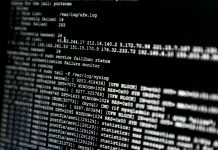The rapidly evolving digital landscape has rendered cybersecurity measures such as firewalls and encryption inadequate when used in isolation.
Threat actors are outpacing these defences time and again. For the UK’s housing associations, the sensitive nature of their work means cyber attacks are a growing concern. So, how should the sector pivot to ensure they’re always prepared for what’s next?
John Blackburn, operations director at Central Networks, says organisations need more than prevention. Today, IT leaders need a deeper understanding of how their teams and systems react when faced with a breach.
Often bound by financial and resource constraints, it’s no secret that the housing sector faces heightened pressure when managing operations. With reduced team sizes, individuals bear greater responsibility for handling mounting volumes of work.
And already stretched budgets mean third-party support is rarely an option. This increases the likelihood of human error and risks weakening firms’ security posture through the need for more time to invest in strategy enhancements.
Moreover, the growing trend of remote workforces within the sector has increased disparity in teams’ geographical locations. Of course, securing a growing number of devices is no small feat, requiring more agile and robust cybersecurity measures to ensure data protection and compliance.Therefore, this focus on endpoint security adds another layer of complexity to the challenge.
The vast volumes of sensitive information housed internally make housing associations attractive targets, too. This is particularly true for cybercriminals looking to hold data hostage for ransom. As well as being very descriptive about tenants in many instances, organisations’ close affiliations with government and public sector entities amplify the value of their insight.
Cyberattacks on these firms can be catastrophic. As vital pillars in the community, housing associations provide shelter and support to vulnerable groups. As such, their operational security extends well beyond financial considerations. Even the smallest of breaches can disrupt essential services, compromise tenants’ privacy, and erode public trust in the long term.
The pitfalls of penetration testing in today’s cybersecurity strategies
Penetration testing represents a significant improvement over traditional cybersecurity methods. Adopting the same tools, techniques, and processes as attackers, this process, dubbed as ‘ethical hacking,’ helps pinpoint weaknesses in a company’s IT estate that could be exploited elsewhere. But the biggest risk isn’t hackers — it’s complacency.
Often, organisations fall into the trap of assuming a single penetration test will uncover every existing vulnerability. Unless you’re a seasoned cybersecurity expert dealing with breaches day in and day out, you’re unlikely to stay ahead of threat actors’ every move.
Infrequent penetration testing gleaned only a snapshot of your cybersecurity defences when the activity was conducted. Focusing solely on technical vulnerabilities, they neglect one of the most common risks plaguing organisations today: human error. According to Stanford University and cybersecurity firm Tessian researchers, approximately 88% of all data breaches occur due to an employee mistake.
Housing associations should adopt a more holistic cybersecurity strategy to address these gaps. As well as ongoing training and awareness programmes, penetration testing should evolve into a more dynamic and iterative process. With this multifaceted approach, companies can ensure both technical and human factors are addressed regularly, maximising resilience to threats as they evolve.
The role of cyber crisis simulation in boosting resilience
Just as fire drills prepare building occupants for emergencies — practising their evacuation procedures and familiarising themselves with the emergency exits — crisis simulations empower organisations to rehearse their response to cyberattacks.
During a cyber crisis simulation, housing association teams can step into a virtual world that mimics high-pressure scenarios unfolding during a breach, where they must confront a realistic cyber threat head-on. From IT specialists to communication managers, team members assume roles and practice incident response, containment, communication, and recovery strategies in a low-stakes, controlled environment. Instilled with knowledge and muscle memory, employees will know precisely how to react and collaborate during an attack.
But what sets this method apart?
Adaptability. Housing associations can tailor these methods to suit their unique applications and potential threats. For example, they could simulate a scenario where a third-party vendor experiences a data breach that puts sensitive tenant data at risk of exploitation. Organisations can, therefore, assess their readiness to respond to specific, high-risk situations.
Once concluded, teams can evaluate their performance, identify weaknesses, and refine their response plans accordingly. Implementing this feedback loop is essential in helping firms continually improve their cybersecurity posture as circumstances change and better equipping them to protect their digital assets.
In transforming cybersecurity from a passive, reactive discipline into an active, proactive strategy, housing associations can ensure the safety and security of their tenants while upholding their reputation as a trusted community pillar.
This piece was written and provided by John Blackburn, operations director at Central Networks.
Editor's Recommended Articles
-
Must Read >> Will Rishi Sunak reassess UK cybersecurity policies?














